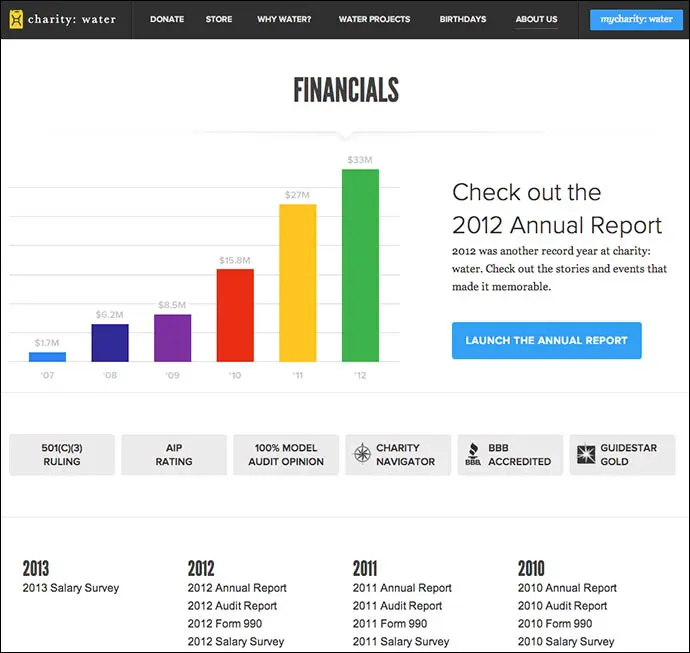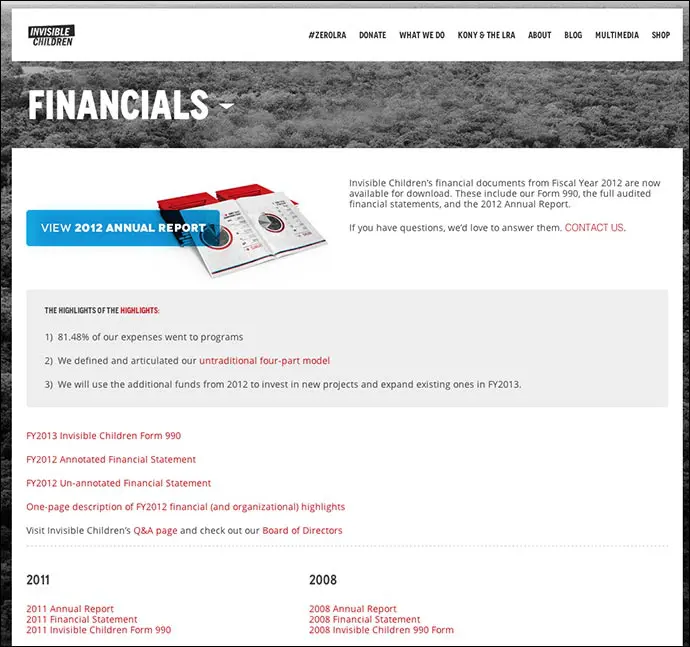To many, numbers aren’t the most exciting thing. When you’re launching a new website (or just making some updates to your existing site), it’s common to think about how you’ll tell your story or the pictures you’ll include on the homepage.
But many people don’t think about their financial data. And that’s a big mistake.
Reasons to Include Nonprofit Financials
Looking for reasons to include your nonprofit’s financial information on your website? Here are a few of the most important ones.
Donors Look for Financial Information
This should make your ears perk up. In a comprehensive Guidestar study on donor motivation, many donors indicated they want to see financial data before deciding where to give their money.
In fact, when asked “what type of information is most important to you,” financial information took the top spot for both individual donors and advisors. For foundations, it ranked third (just behind other performance metrics).
Donors want to see your financial information. If online fundraising is important to your nonprofit, you should make this info readily available.
Financial Info Builds Trust
Along the same lines, openly sharing your financial information makes it seem like you have nothing to hide. Transparency is a great way to build trust with your website visitors, making it more likely they’ll decide to contribute.
Don’t believe me? Let’s turn to the data.
In a study on Millennials (ages 20-35), 84% said they would be “somewhat or very likely to donate to organizations that they can fully trust.” On the other hand, 90% of these donors said they would stop giving to a nonprofit “if they did not trust the organization.”
Trust is a key player in the decision to donate. And financial information can be a great way to build trust with your website visitors.
Financial Data Can Compel Action
Numbers don’t have to be boring. Don’t think of the traditional, stuffy annual report. Instead, imagine financial data showcasing the outcomes your nonprofit has achieved.
Don’t just talk about how much money you’ve raised or the total amount you spent on delivering services. Link these numbers to tangible outcomes. Tell the stories behind the numbers. Inspire your visitors to take action by getting involved.
Your Financials page can serve as a gateway, pushing your visitors to become supporters of your organization.
Download the Essential Content Checklist
Wondering what should be on your nonprofit’s website? Get our content checklist for essential and common web pages, like Financials, About Us and Get Involved.
"*" indicates required fields
Great Examples of Nonprofit Financial Pages
Take a look at a few of the following organizations and their awesome use of Financials pages.

The folks at charity: water do a great job inspiring confidence right away. They show their rapid growth over the past six years in a bar chart that immediately grabs the visitor’s attention. They showcase their various accreditations and ratings as well as making past information easy to find.
For a bonus, you should check out their online annual report.
One thing I love about this Financials page is they pull out the key statistic they want everyone to see:
“85% of all donations go toward saving species & places.”
Those that want more info can peruse the charts and annual reports included further down on the page.

Invisible Children lays their info out in a way that’s straightforward and easy to find. But they also call out the information they want visitors to see right away in their “Highlights of the Highlights” box at the top of the page.
They also promote interaction, telling visitors they’re happy to answer any questions and linking to their Contact page.
Does your nonprofit have a Financials page on your website? Are you considering adding one? Or have you come across other Financials pages you think we should check out? Please share in the comments below.

What is the best practice about how many years of financials to have posted?
Thanks for the comment Christina. We don’t really have a firm number, but I think if you can show the last three years that’s great. If you can go back further, even better! It all comes down to establishing credibility and building trust, and the more history you can show the more likely it is to have an impact with a potential donor.
Hi David
Since we are a new tax exempt organization, we don’t have the financial reports to post on our website. However would you suggest adding a budget breakdown for the project on our site? I don’t see that much but wonder if it helps build credibility.
I think that’s a great idea Heather. You could certainly include some sort of budget breakdown for the time being. That’s essentially the route that World Wildlife Fund went in the example above (only they posted info from the previous fiscal year). Once you have historical data to report, you can add that in.
To further add a sense of transparency and build trust, you could also include your 501(c)(3) ruling from the IRS for now. That way, potential funders can rest assured that you are a registered nonprofit.
Hope that helps!
I have a member asking to have a copy of the 2019-2020, line-item budget posted on our website. is this advisable?
He is also asking to see a copy of the final financial line-item report of the Annual meeting.
I have never had a request to share financials before. I understand transparency but also concerned about nit picking.
Hi Kristy. As you know from the post we’re big fans of transparency around these parts, but sharing an itemized budget and final financial report does sound like a bit much to me.
Could you ask him for more information about his concerns and how he plans to use that info? Hopefully that would allow you to gain some insight into where he’s coming from and perhaps find an alternative way to meet at least some of his needs.